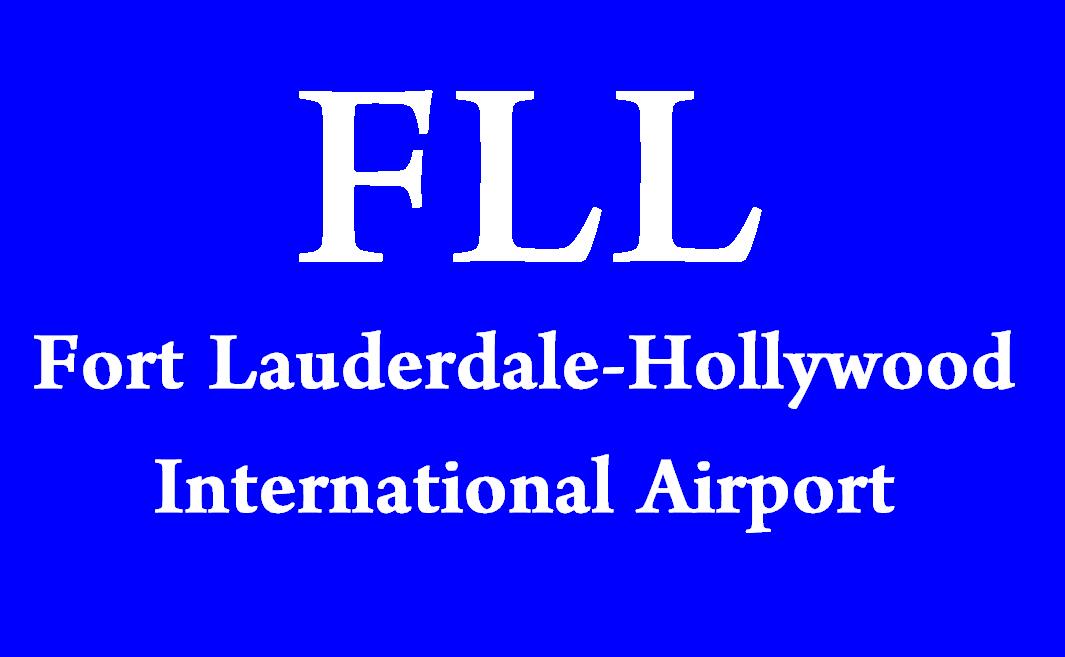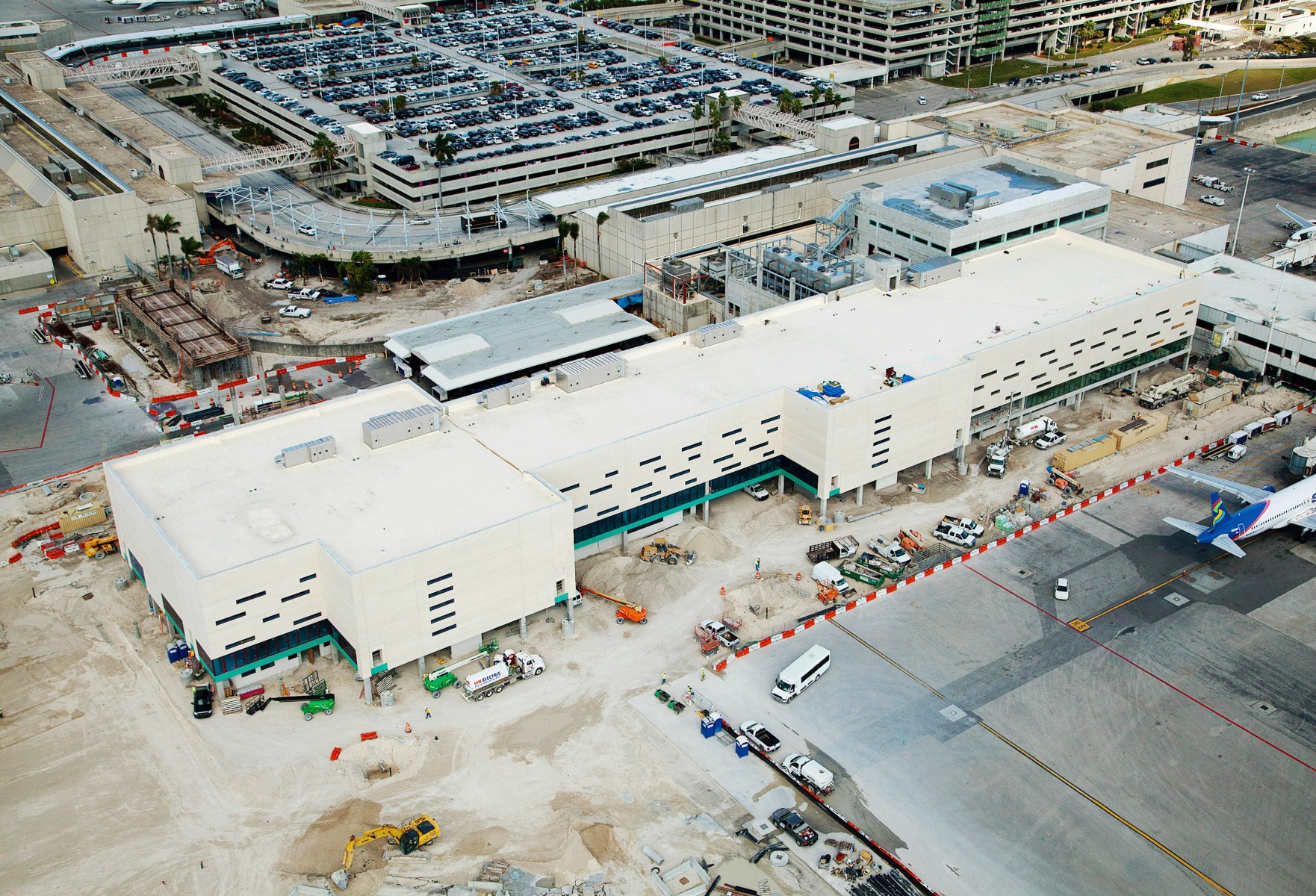Fort Lauderdale-Hollywood International Airport (IATA Code: FLL) is one of the busiest airports in the southeastern United States, serving millions of travelers annually. Whether you're planning a trip to South Florida or need detailed information about this major transportation hub, this article provides comprehensive insights into everything you need to know. From its history and facilities to travel tips and more, we'll cover it all.
As a key player in the aviation industry, Fort Lauderdale-Hollywood International Airport has become a vital link for domestic and international flights. With its strategic location in Broward County, the airport serves both leisure and business travelers efficiently.
In this article, we'll explore the airport's IATA code significance, its infrastructure, and how it contributes to the region's economic growth. We'll also delve into practical advice for travelers, ensuring your journey through FLL is as smooth as possible.
Read also:Jason Tatum Baby Mama Unveiling The Relationship And Untold Stories
Table of Contents
- Overview of Fort Lauderdale-Hollywood International Airport
- Understanding Airport Codes: IATA and ICAO
- A Brief History of Fort Lauderdale-Hollywood International Airport
- Airport Facilities and Services
- Travel Tips for Fort Lauderdale-Hollywood International Airport
- Getting to and from Fort Lauderdale-Hollywood International Airport
- Airport Statistics and Growth
- Sustainability Initiatives at FLL
- Nearby Attractions and Activities
- Conclusion
Overview of Fort Lauderdale-Hollywood International Airport
Fort Lauderdale-Hollywood International Airport is a major public airport located in Broward County, Florida. It serves the Greater Fort Lauderdale area and is the second-largest airport in South Florida after Miami International Airport. The airport's IATA code, FLL, is widely recognized in the aviation industry.
The airport has three main terminals: North, South, and midfield. Each terminal offers a wide range of services, including check-in counters, security checkpoints, and boarding gates. In recent years, FLL has undergone significant renovations to improve passenger experience and accommodate increasing traffic.
Key Features of FLL
- Three main terminals: North, South, and Midfield
- Over 100 gates serving domestic and international destinations
- State-of-the-art amenities, including lounges, dining options, and retail stores
Understanding Airport Codes: IATA and ICAO
Airport codes are standardized abbreviations used to identify airports globally. The most common codes are IATA and ICAO. Fort Lauderdale-Hollywood International Airport's IATA code is FLL, while its ICAO code is KFLL. These codes are crucial for airline operations, booking systems, and air traffic control.
IATA codes consist of three letters and are primarily used for commercial purposes, such as ticketing and baggage handling. On the other hand, ICAO codes have four letters and are used by aviation authorities for technical and operational purposes.
Why Are Airport Codes Important?
- Simplify communication in the aviation industry
- Ensure accurate tracking of flights and baggage
- Streamline global travel operations
A Brief History of Fort Lauderdale-Hollywood International Airport
Fort Lauderdale-Hollywood International Airport began its operations in 1929 as a small airfield. Over the decades, it has grown into a major international airport, serving millions of passengers annually. In the 1960s, the airport underwent significant expansion to accommodate increasing air traffic, and today it remains a vital hub for both commercial and cargo flights.
Throughout its history, FLL has been a leader in innovation and customer service. The airport continues to invest in infrastructure improvements, ensuring it meets the needs of modern travelers.
Read also:Kristi Noem Before And After Appearance A Comprehensive Analysis
Milestones in FLL's History
- 1929: Initial establishment as a small airfield
- 1960s: Major expansion to accommodate growing demand
- 2010s: Renovations and modernization projects
Airport Facilities and Services
Fort Lauderdale-Hollywood International Airport offers a wide range of facilities and services to enhance the travel experience. From dining and shopping to lounges and baggage services, FLL ensures passengers have access to everything they need during their journey.
Dining and Shopping
The airport features numerous dining options, ranging from casual eateries to fine dining restaurants. Travelers can also enjoy a variety of shopping experiences, including duty-free stores, souvenir shops, and high-end retail outlets.
Traveler Amenities
- Wi-Fi access throughout the airport
- Charging stations for electronic devices
- Lounges offering premium services for elite travelers
Travel Tips for Fort Lauderdale-Hollywood International Airport
Traveling through Fort Lauderdale-Hollywood International Airport can be a seamless experience if you follow a few simple tips. From arriving early to navigating the terminals, these suggestions will help ensure your trip is stress-free.
Arrival and Departure Tips
- Arrive at least two hours before domestic flights and three hours before international flights
- Check your airline's baggage policies to avoid unexpected fees
- Utilize the airport's mobile app for real-time updates and directions
Getting to and from Fort Lauderdale-Hollywood International Airport
Transportation options to and from FLL are abundant, catering to a variety of traveler needs. Whether you prefer public transportation, ride-sharing services, or rental cars, the airport provides convenient access to all.
Public Transportation
Tri-Rail and Broward County Transit offer reliable and affordable options for reaching FLL. These services connect the airport to various locations throughout South Florida, making it easy for travelers to navigate the region.
Rental Cars and Ride-Sharing
- Rental car agencies are located on-site for quick access
- Ride-sharing services like Uber and Lyft are readily available
Airport Statistics and Growth
Fort Lauderdale-Hollywood International Airport has experienced remarkable growth over the years. According to the Federal Aviation Administration, FLL served over 30 million passengers in 2022, solidifying its position as a major player in the aviation industry.
Data from the U.S. Department of Transportation highlights the airport's increasing importance in international travel. With direct flights to numerous destinations across the Americas, Europe, and the Caribbean, FLL continues to expand its reach.
Growth Trends
- Passenger numbers have increased by 10% annually over the past five years
- New routes and partnerships with airlines contribute to sustained growth
Sustainability Initiatives at FLL
Fort Lauderdale-Hollywood International Airport is committed to promoting sustainability and reducing its environmental impact. Through innovative programs and partnerships, FLL aims to become a leader in green aviation practices.
One of the airport's key initiatives involves implementing solar energy systems and reducing carbon emissions. Additionally, FLL has launched recycling programs and encourages the use of electric vehicles within its facilities.
Sustainable Practices
- Solar panel installations to generate renewable energy
- Recycling programs for waste management
- Promotion of electric vehicles for airport operations
Nearby Attractions and Activities
Fort Lauderdale-Hollywood International Airport is surrounded by numerous attractions and activities, making it an ideal gateway to South Florida's vibrant culture and natural beauty. Whether you're interested in exploring beaches, museums, or nightlife, there's something for everyone near FLL.
Top Attractions Near FLL
- Fort Lauderdale Beach: A popular destination for sunbathing and water sports
- Bonnet House Museum & Gardens: A historic estate featuring stunning botanical gardens
- Las Olas Boulevard: Known for its upscale shopping and dining experiences
Conclusion
Fort Lauderdale-Hollywood International Airport (IATA Code: FLL) is a vital transportation hub serving millions of travelers annually. From its rich history and modern facilities to its commitment to sustainability and growth, FLL continues to play a crucial role in the aviation industry. By following the tips and insights provided in this article, your journey through FLL will be smooth and enjoyable.
We invite you to share your thoughts and experiences in the comments section below. For more information on travel destinations and tips, explore our other articles. Happy travels!


